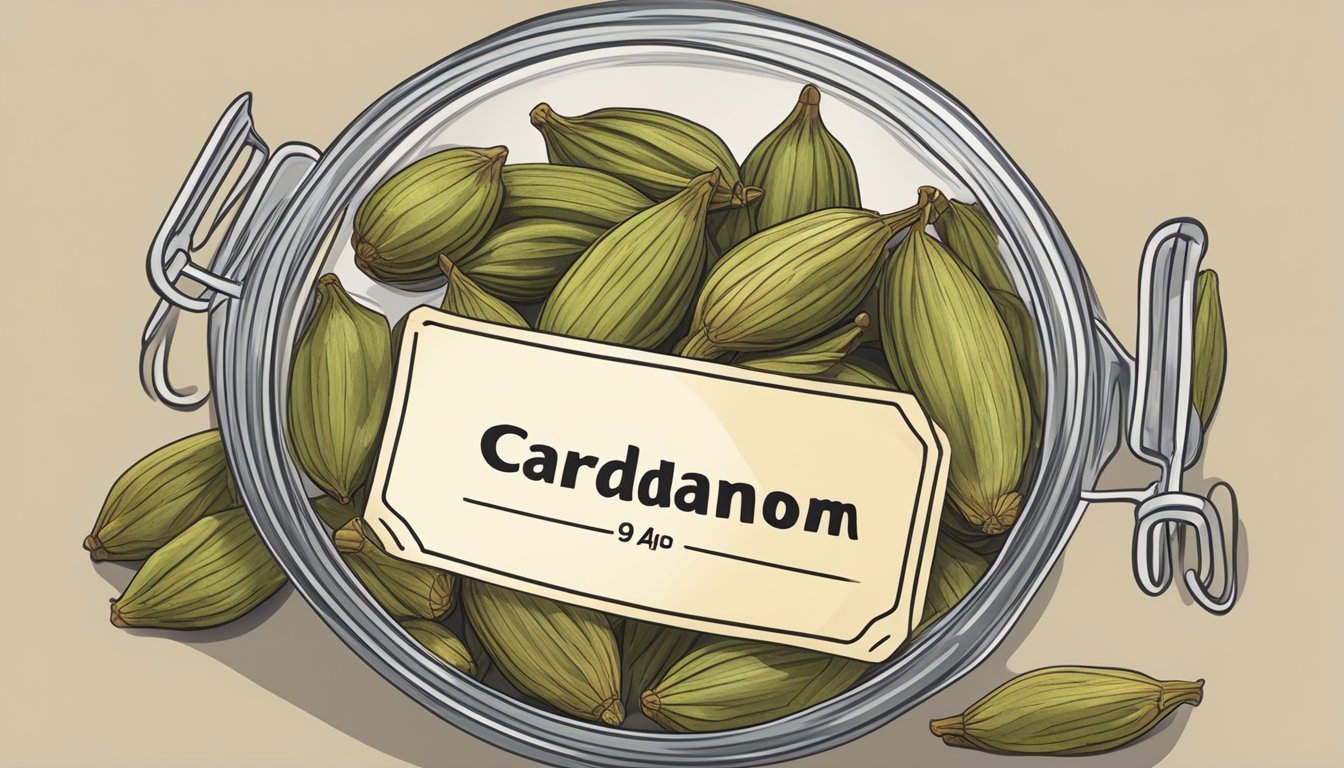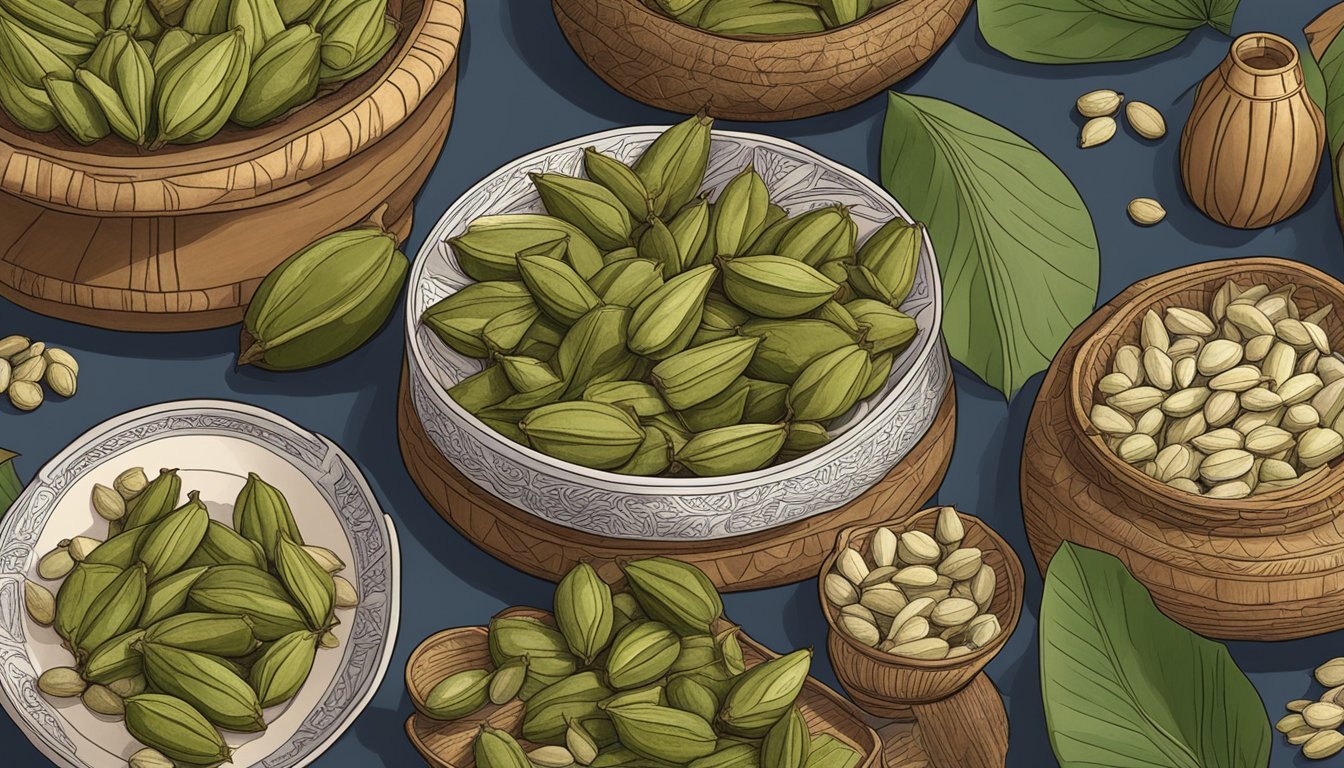Does Cardamom Pods Go Bad?
Shelf Life and Storage Tips
Cardamom pods, a staple spice in many kitchens, are known for their unique, aromatic flavor that enhances a variety of dishes. However, like any spice, they can lose their potency over time. Cardamom pods do go bad, and the signs include a decrease in flavor, smell, and the pods becoming dry and brittle.
When cardamom pods are fresh, they are plump and slightly moist, boasting a warm, slightly sweet flavor with floral notes. Stale or old cardamom pods become bland, musty, and less aromatic, indicating that they've passed their prime.
Store cardamom pods properly in an airtight container in a cool, dry place away from sunlight and heat to maximize their shelf life and maintain their distinctive flavor. By doing so, you can ensure that this beloved spice continues to add its unique touch to your culinary creations.
Understanding Cardamom Pods
Cardamom pods are a versatile spice known for their distinctive flavor and numerous health benefits. Their culinary uses span various cuisines, and they offer multiple therapeutic properties that can promote well-being.
Varieties of Cardamom
Cardamom comes in several varieties, with green cardamom being the most common. Green cardamom, also known as true cardamom, features small, green pods containing tiny black seeds with a sweet and spicy flavor.
Another variety is black cardamom, which has larger, darker pods with a smoky aroma due to being dried over an open fire. It is often used in savory dishes.
White cardamom is essentially bleached green cardamom and has a milder taste. Each type offers distinct flavors and is used in different culinary contexts.
Culinary Uses
Cardamom is widely used in both sweet and savory dishes. In Indian and Middle Eastern cooking, it is a key ingredient in curries, rice dishes, and chai tea.
In Scandinavian cuisine, cardamom is frequently found in baked goods, such as buns and cookies. Chewing on whole cardamom pods can help freshen breath, making it a popular choice in both cuisine and traditional practices.
Health Benefits
Cardamom offers several health benefits. It is rich in antioxidants, which help combat oxidative stress. The spice has anti-inflammatory properties that can reduce swelling and pain.
Its antibacterial characteristics can improve oral health by reducing bad breath and preventing cavities. Cardamom is used in ayurvedic medicine to aid digestion and alleviate nausea. Recent studies suggest potential benefits in lowering blood pressure and managing blood sugar levels.
These properties make cardamom valuable not just in cooking but also in promoting holistic wellness.
Storing Cardamom Pods
Proper storage of cardamom pods is essential to maintain their flavor and aroma. The key factors include controlling exposure to air, moisture, and light, as well as considering the temperature and humidity of the storage environment.
Ideal Conditions
Cardamom pods should be stored in an airtight container to prevent exposure to air and moisture. A tight seal ensures that the essential oils, which give cardamom its distinctive flavor, are preserved. Humidity is particularly detrimental, as it can cause the pods to become moldy or lose their potency.
Temperature and light also play a crucial role. Store cardamom in a cool, dry place away from direct sunlight. Pantry shelves or kitchen cabinets are suitable locations, as long as they are not near heat sources like stoves or dishwashers. Freezing is an option but can cause texture changes that may not be desirable for all culinary uses.
Shelf Life
Whole cardamom pods generally have a shelf life of one to two years. The outer shell protects the seeds, retaining their flavor over time. Ground cardamom, on the other hand, loses its potency much more quickly, often within a few months.
To check if cardamom pods are still good, inspect their appearance and smell. Fresh pods are typically plump and slightly moist, whereas stale ones may be dry and brittle. A strong, pleasant aroma indicates freshness, while a lack of scent suggests the pods are past their prime. Regularly checking your spices ensures you get the best flavor in your cooking.
A sealed, airtight container and a cool, dry environment are vital to extending the shelf life of cardamom pods. Avoiding exposure to light, moisture, and fluctuating temperatures will help maintain their quality over time.
Spotting Spoilage
Understanding how to spot spoilage in cardamom pods is crucial. This covers the visual aspects like appearance and texture, as well as sensory cues such as aroma and flavor.
Appearance and Texture
When assessing if cardamom pods are spoiled, start by examining their appearance and texture. Fresh cardamom pods should be plump and have a vibrant green color. If the pods are dry and brittle, this is a sign they might be past their prime.
Another indication of spoilage is the presence of mold. Mold can appear as white or blue-green spots on the surface of the pods. Additionally, if the pods are discolored or have turned a shade darker, it could mean they have gone bad.
Touching the pods can also provide insight. Fresh pods feel slightly moist to the touch, while spoiled ones lack this moisture and feel overly dry. Plumpness indicates that the essential oils, which give cardamom its unique flavor and aroma, are still intact.
Aroma and Flavor
The aroma and flavor of cardamom pods are critical indicators of their freshness. Fresh cardamom pods emit a strong, unique aroma that is both sweet and spicy. If the scent is faint or has dissipated, it signals that the pods have likely lost their potency.
Tasting can further confirm spoilage. Fresh cardamom has a distinctive and robust flavor profile. Spoiled cardamom will taste bland or stale. If the pods fail to impart their usual flavor, this is a strong sign they are no longer good to use.
Another red flag in terms of aroma is an off or musty smell. This indicates the pods might be rancid. It is important to remember that cardamom's natural oils can become volatile and degrade over time, impacting both aroma and flavor.
Regularly checking both scent and taste will ensure that you are using fresh and effective cardamom pods in your cooking.
Using Cardamom Pods in Cooking
Cardamom pods add a unique flavor to both sweet and savory dishes. Proper preparation techniques and integration into various recipes ensure the best culinary results.
Preparation Techniques
Preparing cardamom pods correctly is crucial. Start by cracking open the pods using a pestle or garlic press, which makes it easy to remove the seeds. If ground cardamom is needed, the seeds can then be ground using a mortar and pestle or a spice grinder.
Toasting the pods in a skillet for a few minutes enhances the flavor before removing them from heat. Let them cool slightly before use. This works well for both whole and ground forms. Avoid using too much cardamom as its flavor can quickly overpower a dish.
Recipe Integration
Cardamom can be added to a variety of dishes and beverages. In Middle Eastern cuisine, it's common in rice pilafs and curries. The pods are often used whole in these recipes or can be added ground.
In beverages, cardamom enhances the taste of tea, coffee, and chai. For baking, sweet dishes like cakes and cookies benefit from the spice's distinctive taste. Savory dishes such as stews and soups can also include cardamom for an aromatic twist. Adjust the quantity based on the specific recipe to balance the flavor without overpowering other ingredients.
Cardamom Pods in Cultural Contexts
Cardamom pods have played significant roles in both traditional cuisine and international markets. Their applications range from delightful additions to meals and beverages to being valuable items in the global spice trade.
Role in Traditional Cuisine
Cardamom is a prominent spice in Indian and Middle Eastern cuisines. In Indian cuisine, it is used in both savory and sweet dishes. Garam masala, a popular spice blend, often includes cardamom for its sweet, floral notes. It is equally revered in desserts such as kheer and gulab jamun.
In Middle Eastern cuisine, cardamom flavors coffee and tea, often enhancing the beverage's aromatic profile. Its use extends to sweets like baklava and basbousa, making dishes more dynamic with its robust essence. These culinary practices highlight cardamom's versatility and significance in cultural traditions.
Cardamom in International Markets
Cardamom is one of the world's most expensive spices due to its labor-intensive cultivation process. India and Guatemala are the leading producers, with significant exports to the Middle East, Europe, and North America.
Its essential oils are highly sought after in fragrance and therapeutic industries. In global spice markets, cardamom remains a premium product, prized for both its culinary uses and its role in health and wellness sectors. The widespread demand underscores its valued position in diverse markets.







